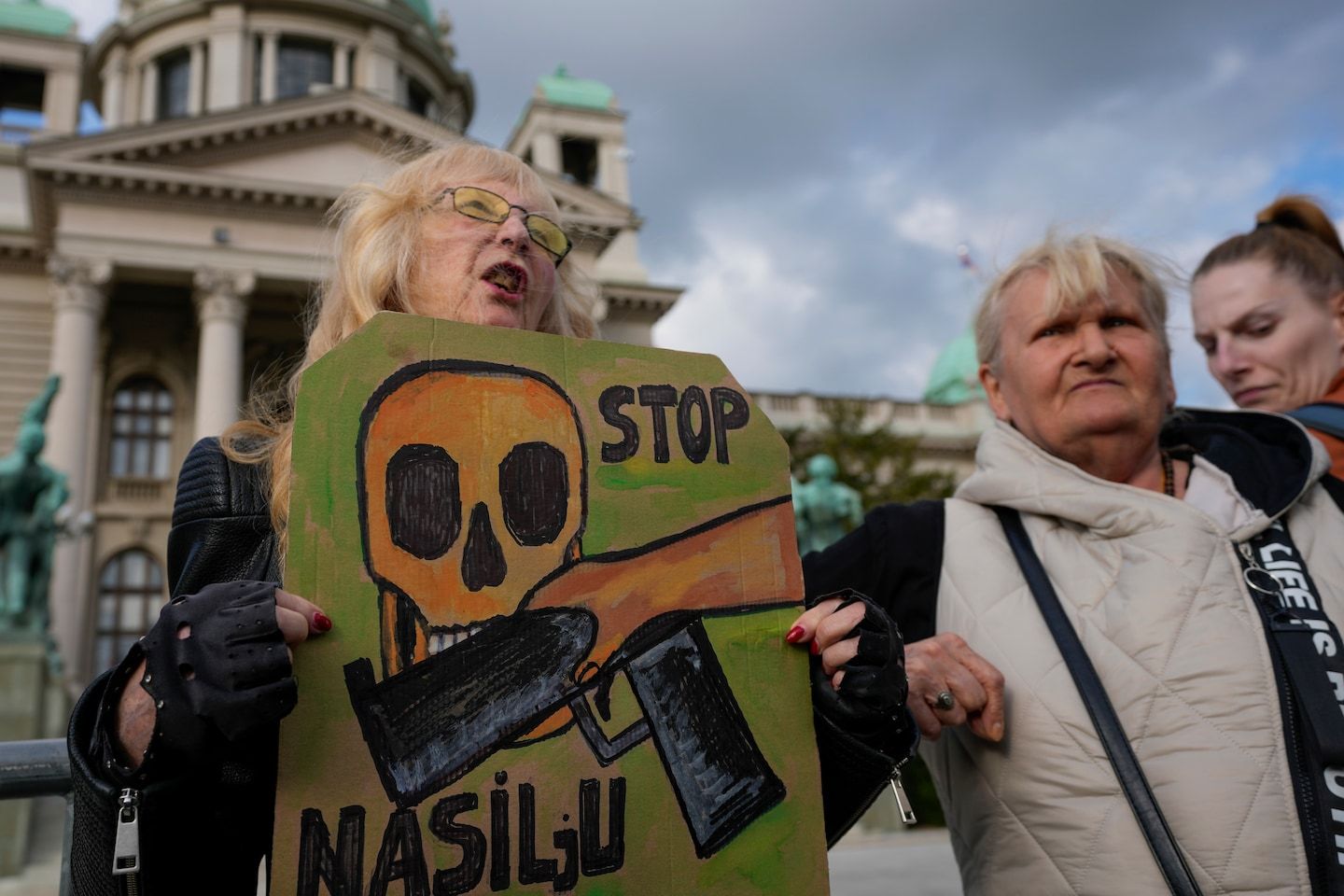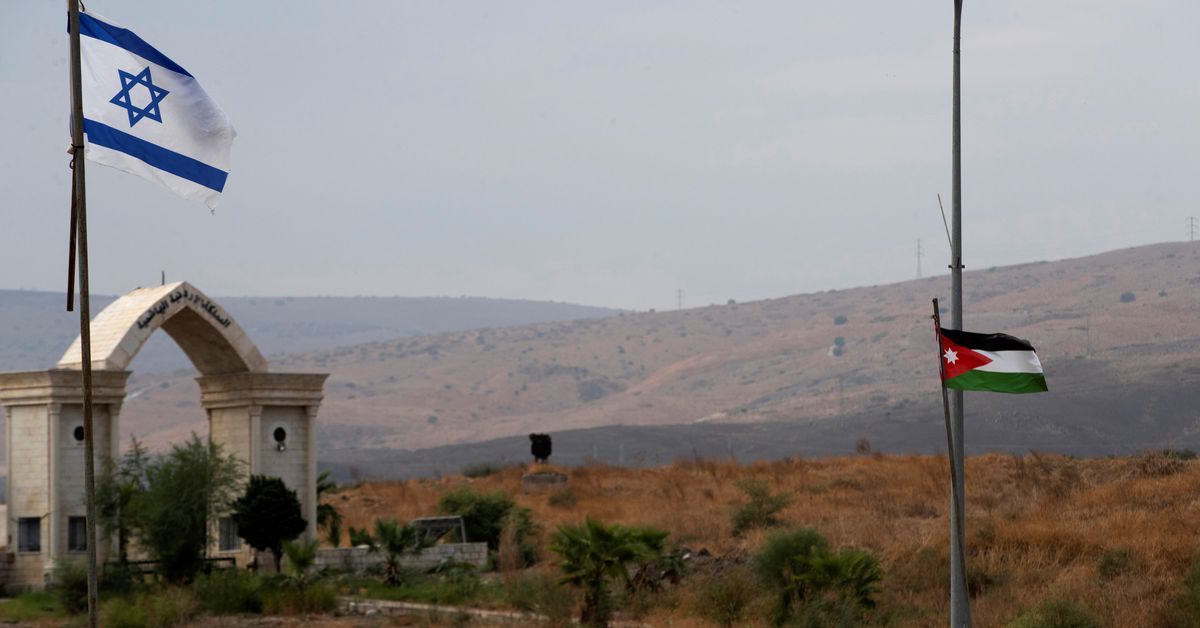Serbia tightens gun control after 2 mass shootings
On May 8, tens of thousands of Serbians rallied against gun violence in the capital Belgrade, after two mass killings this month. (Video: Reuters)
Listen 4 min Comment on this story Comment Gift Article Share
Serbians handed in thousands of guns in the first three days of an amnesty aimed at disarming the country following two mass killings last week, including one targeting schoolchildren. Almost 6,000 unregistered weapons, 300,000 rounds of ammunition, and 470 pieces of mines and explosive devices have been voluntarily surrendered nationwide since Monday, the country’s interior ministry said Thursday in an Instagram post promoting the measure.
President Aleksandar Vucic announced a suite of gun-control measures on May 5, pledging to “carry out an almost total disarmament of Serbia.”
“We must make a decision to confront this evil,” he said. On May 3, a seventh-grader was taken into custody after a mass killing at Vladislav Ribnikar Elementary School in Belgrade, in which eight children and a security guard died. The following night, eight died in a mass killing when a shooter fired from a car in Mladenovac municipality, south of the capital.
Advertisement
Education Minister Branko Ruzic resigned after the tragedy. He said in a statement posted to Twitter on Sunday that seeing pictures from the school shooting and meeting with the parents were experiences he would “carry as a seal on my soul for the rest of my life.”
“May God help us to prevent something like this from happening again,” he said.
Serbia is among the most heavily armed countries in the world, in part a legacy of conflicts in the former Yugoslavia throughout the 1990s. It has the third-highest rate of civilian gun ownership per capita (tied with Montenegro), according to the 2018 Geneva Graduate Institute’s Small Arms Survey. But its government aims to change that with a policy package announced in the aftermath of the two shootings.
The gun amnesty runs from May 8 to June 8, and allows unregistered weapons to be turned in without consequence. Those handing in weapons do not have to show identification or explain the weapons’ provenance, authorities said. Owners of illegal guns can also call police to collect them from an address without repercussions.
Advertisement
Additional gun-control policies that Serbia committed to this month include a two-year moratorium on new permits for small firearms and hunting weapons and a review of all existing weapons permits within three months. The government said it would introduce amendments to tighten conditions for keeping and carrying small firearms aimed at reducing the legally-held number by 20 percent; institute checks on those holding weapons permits, including medical, psychiatric and drug tests; and increase penalties for weapons offenses.
Australia, the United Kingdom, Brazil and Argentina have run similar amnesty programs to reduce firearms.
Philip Alpers, founding director of the University of Sydney’s GunPolicy.org and associate professor of public health, said in a phone interview that firearms amnesties were effective policies to reduce gun violence when they were comprehensive and overseen nationally.
Advertisement
“It seems that it follows several components of the recipe that works,” he said, referring to Serbia’s policy, “a national gun amnesty with no exceptions, and run by a federal government.”
“It has to be a very large-scale amnesty, backed by serious sanctions like prosecution,” he added.
In the United States, which has the world’s highest civilian gun ownership, attempts at amnesties have been limited to small communities which were largely ineffective, Alpers said. Australia was the “most spectacular” example, he added.
Here are the policy changes that Britain, Australia and New Zealand implemented after mass shootings within their borders. (Video: Alexa Juliana Ard/The Washington Post)
In Australia, more than a million guns have been turned in during gun amnesties, including buybacks, since 1997. The majority were surrendered during a significant program the year after the Port Arthur massacre, a mass killing in 1996 that claimed 35 lives and prompted an overhaul of the nation’s gun laws. Other restrictions included banning automatic and semiautomatic long arms, and legislating the need for a “genuine reason” — not including personal protection — to receive a weapon license.
The number of licensed gun owners has halved since then and the proportion of Australian households with a gun at home has fallen by 75 percent, according to University of Sydney analysis. Incidents of mass killings dropped significantly. Overall, gun deaths dropped by 66 percent, according to a report prepared by Alpers and his colleagues.
GiftOutline Gift Article
Source: The Washington Post


